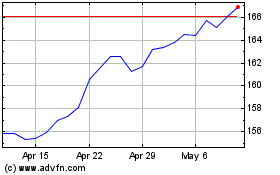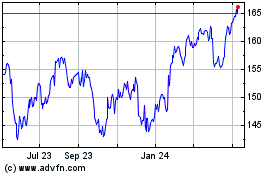By Paul Ziobro
Being funny paid off handsomely for Michael Dubin.
The founder of Dollar Shave Club Inc. introduced his
subscription model for selling razors to the world in 2012 with a
slapstick YouTube video, in which he railed against high-price
blades and deadpanned: "Our blades are f -- ing great."
Now, he is selling Dollar Shave Club to Unilever PLC for $1
billion cash, lining his and his investors' pockets and giving the
company more ammunition to continue to go after the king of
shaving, Procter & Gamble Co.'s Gillette. Mr. Dubin, who held
on to a roughly 9% stake, stands to receive about $90 million from
the sale, said people familiar with the matter.
Humor has long come naturally to the 37-year-old Pennsylvania
native. He spent eight years after college honing his craft with
classes at the famed improv group Upright Citizens Brigade in New
York, while working television and marketing jobs.
But the fast rise of Dollar Shave Club also comes from Mr.
Dubin's instincts as a marketer. He exploited men's long-held
frustrations about the cost of razors and the inconvenience of
shopping for them, and took advantage of an industry that was slow
to change.
"He had a sense of what guys want to talk about and how to talk
with them, rather than shout at them," said David Pakman, a partner
at venture-capital firm Venrock, which led two rounds of funding
for Dollar Shave Club and owns a 15% stake.
Mr. Dubin said the company grew out of an encounter with his
friend's father at a California holiday party in 2010. He had asked
Mr. Dubin, who had some e-commerce experience, to help him sell
250,000 razors that he had acquired from Asia. Their conversation
sparked the idea for Dollar Shave Club.
But in 2011 the concept of selling blades for just $1 each
through a subscription model was met with skepticism. Michael
Jones, a former MySpace CEO who had founded Los Angeles-based tech
incubator and investor Science Inc., recalled thinking that it
would be hard to turn a profit after factoring in shipping
costs.
Then, Mr. Dubin played a rough cut of the now famous YouTube
spot. "The video pushed me over the edge," Mr. Jones said.
Mr. Dubin started the business out of his apartment in Venice,
Calif., where he had moved to be near an ex-girlfriend. He
assembled a team that included former executives from News Corp,
AOL and Gilt Groupe. But his laid-back attitude continued to
encounter resistance as he tried to disrupt an industry that's slow
to change.
Ken Hill, who heads the U.S. arm of Korean razor maker Dorco
Co., recalls his first meeting with Mr. Dubin before Dorco became
Dollar Shave Club's supplier of blades and an investor. "He has on
white pants, sneakers, and looked like he just rolled out of bed,"
Mr. Hill said in an interview. "I looked at my finance guy, rolled
my eyes and said, 'Oh, boy.'"
A former executive with Schick, Mr. Hill had doubts about the
subscription model. "It wasn't compelling enough to sign a
contract, but it was certainly compelling for us to listen to him,"
he said. Dollar Shave Club had to pay for the first order
upfront.
When orders poured in after his video went live in March 2012,
Mr. Dubin had one small printer running nearly 24 hours a day, with
a fan near it to keep the motor cool. The address labels were
collected in trash bags, tossed over a fence to the fulfillment
center and affixed to packages the next day. "That was a very raw
time, the you-got-to-do-whatever-it-takes phase," Mr. Dubin said
Wednesday.
Mr. Dubin continued to push the company introducing hair
products, body washes and moist towelettes. A new product, called
One Wipe Charlies, also introduced with a YouTube video called
"Let's Talk About #2," was a bit uncomfortable to present to
investors.
"He introduced it in a humorous way, but it was backed by data,"
said Mr. Pakman, of Venrock. The company raised about $150 million
in venture capital to fuel its growth. Membership reached 3.2
million, and revenue is on pace to top $200 million this year.
While the growth came fast over the past four years, Mr. Dubin
said he wasn't sure how far the company's come until it opened a
fulfillment center in Torrance, Calif., in late 2015. "You get a
sense of just how many tens of thousands of packages are going out
everyday," Mr. Dubin said. "For the first time, when I looked at
that, I said, 'This is a big business.'"
--Rolfe Winkler and Sharon Terlep contributed to this
article.
Write to Paul Ziobro at Paul.Ziobro@wsj.com
(END) Dow Jones Newswires
July 20, 2016 21:51 ET (01:51 GMT)
Copyright (c) 2016 Dow Jones & Company, Inc.
Procter and Gamble (NYSE:PG)
Historical Stock Chart
From Mar 2024 to Apr 2024

Procter and Gamble (NYSE:PG)
Historical Stock Chart
From Apr 2023 to Apr 2024
